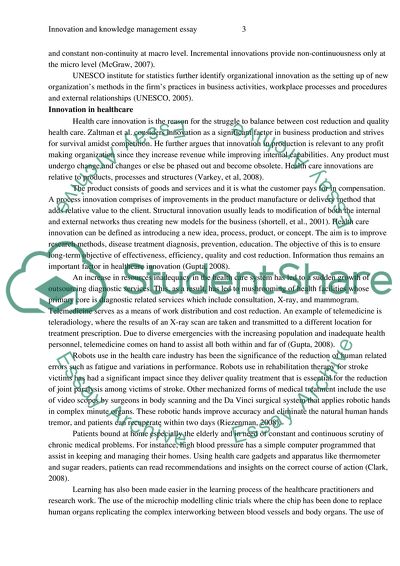Cite this document
(Innovation and Knowledge Management in the Health Care System Coursework Example | Topics and Well Written Essays - 2000 words, n.d.)
Innovation and Knowledge Management in the Health Care System Coursework Example | Topics and Well Written Essays - 2000 words. https://studentshare.org/health-sciences-medicine/1851882-innovation-and-knowledge-management-essay
Innovation and Knowledge Management in the Health Care System Coursework Example | Topics and Well Written Essays - 2000 words. https://studentshare.org/health-sciences-medicine/1851882-innovation-and-knowledge-management-essay
(Innovation and Knowledge Management in the Health Care System Coursework Example | Topics and Well Written Essays - 2000 Words)
Innovation and Knowledge Management in the Health Care System Coursework Example | Topics and Well Written Essays - 2000 Words. https://studentshare.org/health-sciences-medicine/1851882-innovation-and-knowledge-management-essay.
Innovation and Knowledge Management in the Health Care System Coursework Example | Topics and Well Written Essays - 2000 Words. https://studentshare.org/health-sciences-medicine/1851882-innovation-and-knowledge-management-essay.
“Innovation and Knowledge Management in the Health Care System Coursework Example | Topics and Well Written Essays - 2000 Words”. https://studentshare.org/health-sciences-medicine/1851882-innovation-and-knowledge-management-essay.


